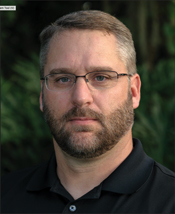“Are We There Yet?”
Last month I had the opportunity to travel to Europe with several colleagues from Charter and CableLabs. We have done this for several years now in a joint effort to understand the common challenges and needs on both sides of the Atlantic Ocean. It has also been a great opportunity to exchange ideas and best practices while making new friends along the way. Common themes the last couple of years have been FTTH construction, DAA deployments, and competitive pressures. One other topic that has emerged the last couple of visits is the pace of change and our ability to keep up with ever growing network and product demands. These aren’t new to any of us but few of us can remember a time when the turnover of network platforms and continuous upgrade cycles have been this demanding. I worry constantly about our engineering, operations, and sustaining teams’ ability to maintain the workload.
Keeping those thoughts in mind we spent some time working on next year’s plans and getting a map laid out of the road ahead. We started by reflecting on some of our successes so far this year:
- DAA ready CCAP chassis deployed across several Cox regions
- 30+ facilities CIN enabled and ready for R-PHY node deployments
- 1000+ RPDs deployed, with that number growing everyday
- Successfully field tested some pieces of automated DAA/R-PHY provisioning
We also reflected on some of the DAA challenges we are dealing with:
- Telemetry and tools still need work, especially in the DAA space
- Security, new challenges for the DAA space (RPD certs, ACLs, remote configuration)
- Upstream visibility in DAA/RPD environment
- Permitting and construction for N+0, this looks a lot like FTTH challenges!
So, what else did we come up with for the next year? Well, more than we have room for in this article. Let me list a few and see if these line up with any of your plans:
- 2nd RPD node vendor/interoperability (we only have one vendor’s CCAP core in our footprint)
- 2nd generation RPDs are right around the corner (new testing and more interop, yay!)
- Automation, Automation, Automation (see note about workload above, we need this)
- Next gen video architecture and video cores (we just converged these, lets split them up!)
- Additional OFDM blocks in the downstream (customers continue to use the internet, imagine that?)
- How about OFDMA? (upstream is our Achilles heel, let’s make it better)
- US mid-split/high-split (we have to put the OFDMA somewhere right?)
- DOCSIS 4.0, ESD, FDX (these don’t need a comment, do they?)
Hopefully these resonate with some of your own thoughts and maybe stir up a few new ideas after reading them. We will pick a few of these to write about in coming Broadband Library issues over the next year as we start to tackle them. If you have some different challenges of your own or would like us to focus on a few of these feel free to drop me a note and we will see what we can do. And the answer to the question up top is, “No, we aren’t there yet, and won’t be anytime soon!” See you next year!
 David Ririe
David Ririe
Sr. Director, Access Engineering
Cox Communications, Inc.
david.ririe@cox.com
David Ririe serves as a Senior Director in the Access Engineering group for Cox Communications in Atlanta, GA. He has worked in various engineering roles for Cox Communications starting as a Network Engineer in the Omaha, NE market 14 years ago. He has lead the team through a number of transitions and upgrades on both the DOCSIS and PON technology platforms in that time. He began his telecom career in the U.S. Air Force working on various communications and data networking platforms in the air and on the ground.



